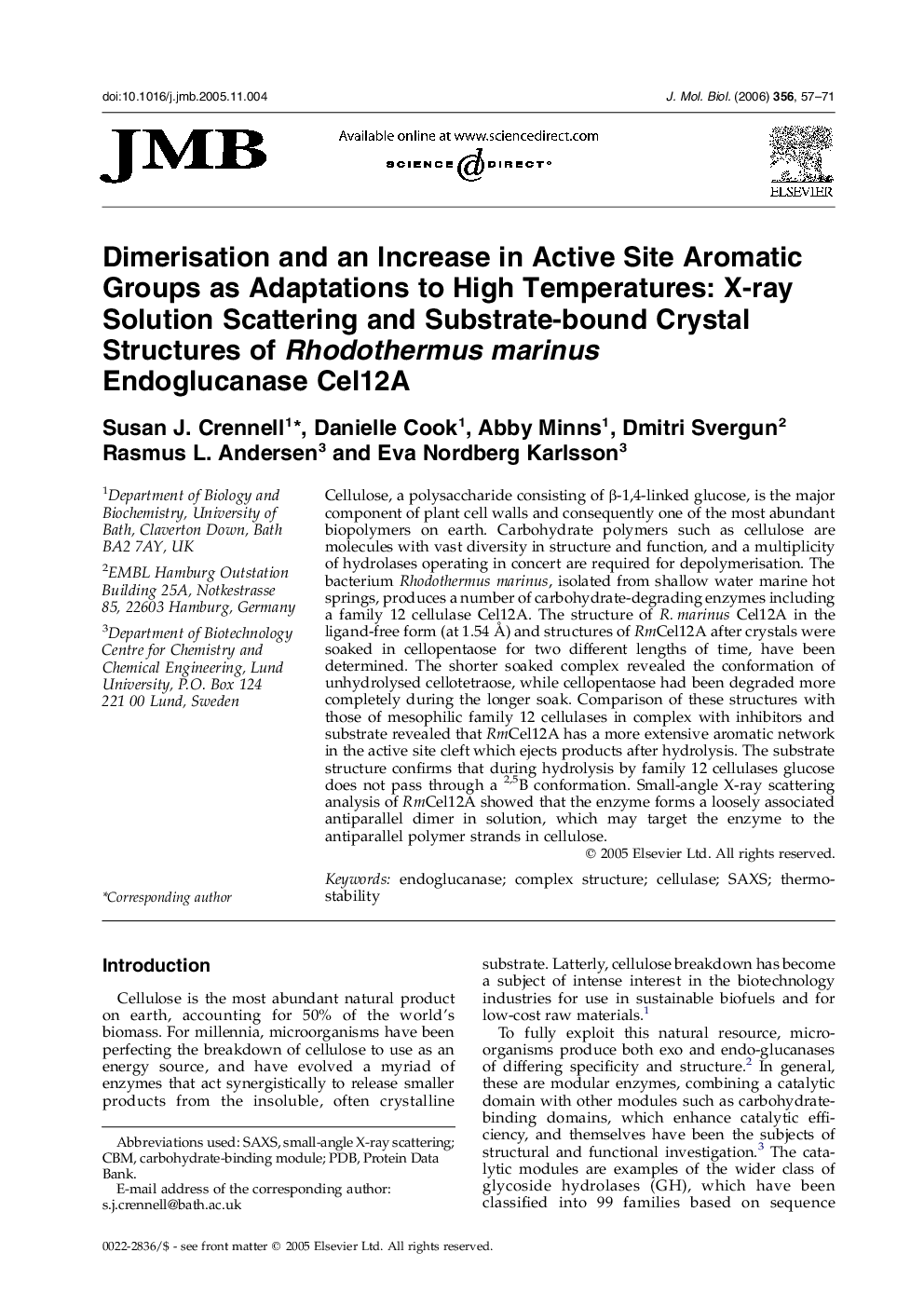| Article ID | Journal | Published Year | Pages | File Type |
|---|---|---|---|---|
| 2189913 | Journal of Molecular Biology | 2006 | 15 Pages |
Cellulose, a polysaccharide consisting of β-1,4-linked glucose, is the major component of plant cell walls and consequently one of the most abundant biopolymers on earth. Carbohydrate polymers such as cellulose are molecules with vast diversity in structure and function, and a multiplicity of hydrolases operating in concert are required for depolymerisation. The bacterium Rhodothermus marinus, isolated from shallow water marine hot springs, produces a number of carbohydrate-degrading enzymes including a family 12 cellulase Cel12A. The structure of R. marinus Cel12A in the ligand-free form (at 1.54 Å) and structures of RmCel12A after crystals were soaked in cellopentaose for two different lengths of time, have been determined. The shorter soaked complex revealed the conformation of unhydrolysed cellotetraose, while cellopentaose had been degraded more completely during the longer soak. Comparison of these structures with those of mesophilic family 12 cellulases in complex with inhibitors and substrate revealed that RmCel12A has a more extensive aromatic network in the active site cleft which ejects products after hydrolysis. The substrate structure confirms that during hydrolysis by family 12 cellulases glucose does not pass through a 2,5B conformation. Small-angle X-ray scattering analysis of RmCel12A showed that the enzyme forms a loosely associated antiparallel dimer in solution, which may target the enzyme to the antiparallel polymer strands in cellulose.
